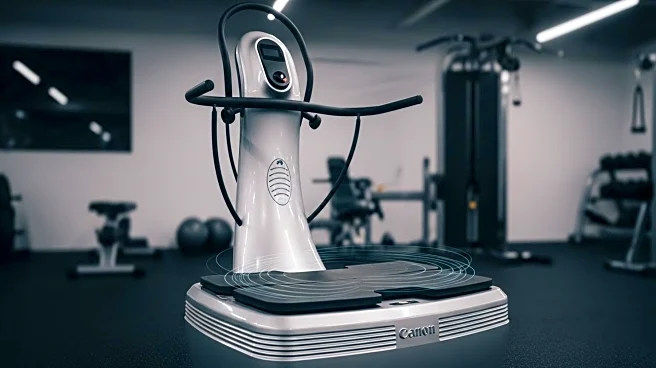What's Happening?
Zone zero training is emerging as a popular fitness trend due to its accessibility and health benefits. This form of exercise involves gentle, low-intensity movements that keep the heart rate below 50% of its maximum. Fitness coach Kate Rowe-Ham explains that zone zero training is akin to active rest, aiding recovery rather than serving as intense training. It is characterized by activities such as strolling, standing, and stretching, which are effortless and allow for comfortable conversation without breathlessness. The trend is gaining traction for its ability to improve circulation, regulate blood sugar, enhance mood, and reduce stress. It is particularly beneficial for breaking up sedentary periods and supporting recovery for those engaged in higher-intensity workouts.
Why It's Important?
Zone zero training is significant because it offers a low-barrier entry to exercise, making it accessible to individuals without the need for costly gym memberships or advanced fitness levels. This approach is beneficial for introducing exercise to those with limited experience and promoting habit formation. It also serves as an excellent active recovery method between more intense workouts. Research indicates that incorporating light movement into daily routines can lead to longer life spans and reduced risk of chronic diseases. The trend addresses the negative health impacts of prolonged sitting, providing a sustainable way to maintain energy flow and support longevity without the need for strenuous gym sessions.
What's Next?
As zone zero training continues to gain popularity, it may become a staple in fitness routines, especially for those seeking sustainable and accessible exercise options. Fitness professionals might increasingly advocate for incorporating zone zero activities into daily life as a baseline, complemented by more structured exercise sessions. This approach could lead to a broader acceptance of varied exercise intensities, promoting overall health and well-being. The trend may also influence public health recommendations, encouraging individuals to integrate low-intensity movements into their lifestyles to combat sedentary habits and enhance longevity.
Beyond the Headlines
Zone zero training highlights a shift in fitness culture towards valuing low-intensity exercise and its benefits. This trend challenges the traditional emphasis on high-intensity workouts, offering a more inclusive approach to physical activity. It underscores the importance of movement diversity for future-proofing the body, advocating for a mix of exercise intensities to protect muscle and bone health. The trend also aligns with broader discussions on sustainable living and aging well, emphasizing the need for exercise practices that are manageable and beneficial over the long term.











